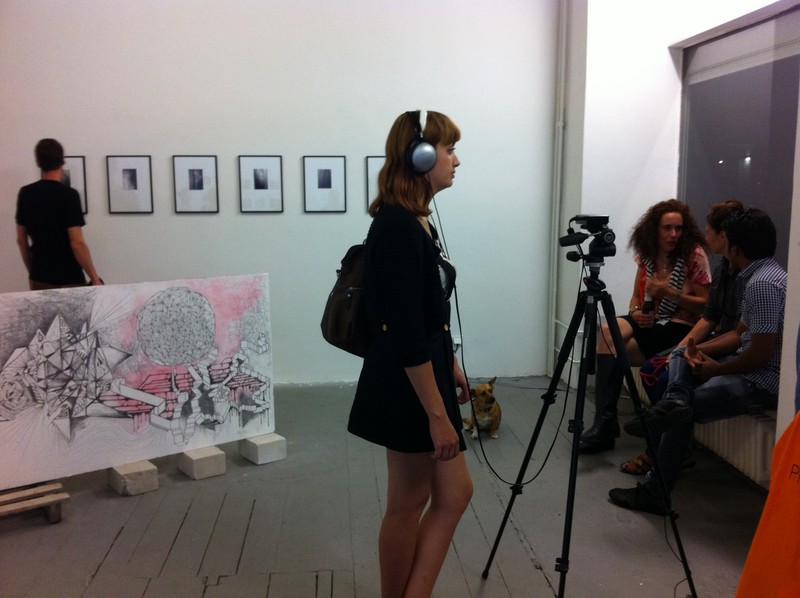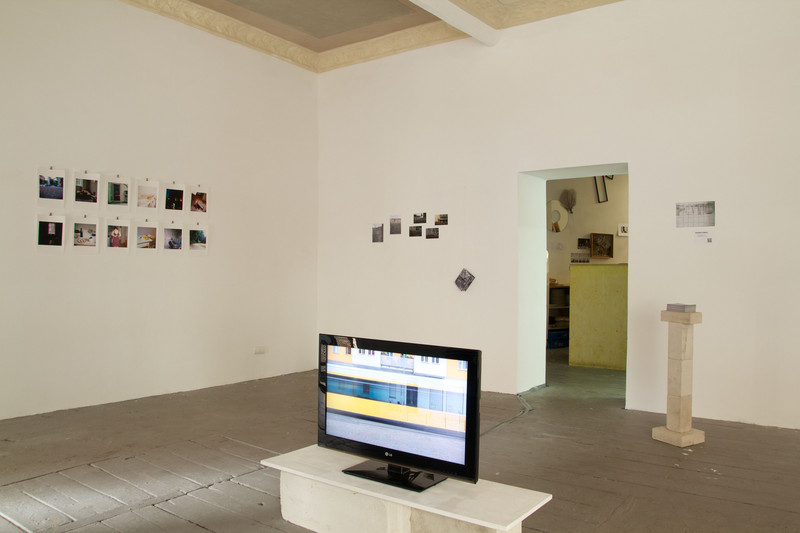SHIFT AND ADJUSTMENT - PICTURE BERLIN - FINAL SHOW

installation view with works by Kara J. Schmidt and Bill Berger

installation view, first room, photo: Richard Rocholl

installation view, first room, photo: Richard Rocholl
//
Shift and Adjustment
Everything is in flux, nowhere more than in an artist residency. Through the passage of PICTURE BERLIN’s intense 5-week-program, however, traces have been left by the translation of ideas into something physical. The final exhibition can be seen as a mark the eleven artists have left in Berlin while at the same time it is a snapshot of their transition, not necessarily the endpoint of what was started here but a midpoint of what has begun. Shift and Adjustment is a metaphor of the creative process and an attempt to adjust to the new conditions that have presented themselves to each participating artist.
It is with great pleasure that we would like to invite you to this group exhibition featuring new work by PICTURE BERLIN's participating artists:
Bill Berger
Elizabeth Smarz
Hannah Gopa
Helena Wolfenson
Julia Briere
Kara J. Schmidt
Melanie K. Irwin
Sarah Goodchild Robb
Shannon Partrick
Tanya D. Fox
Valentina Culley-Foster
The final exhibition of the 2013 Picture Berlin program curated by Conny Becker
opening on 08.08.2013 at LoBe, Schererstraße 7, 13347 Berlin
see also: www.pictureberlin.org
//
Shift and Adjustment
Everything is in flux, nowhere more than in an artist residency. Through the passage of PICTURE BERLIN’s intense 5-week-program, however, traces have been left by the translation of ideas into something physical. The final exhibition can be seen as a mark the eleven artists have left in Berlin while at the same time it is a snapshot of their transition, not necessarily the endpoint of what was started here but a midpoint of what has begun. Shift and Adjustment is a metaphor of the creative process and an attempt to adjust to the new conditions that have presented themselves to each participating artist. Thereby, different approaches of response can be distinguished: be it within a personal angel, from a more documentary perspective, or in an abstract or rather formal way.
The intimate dialogue with the city which continues to be a stranger, is what draws us to Shannon Partrick’s series of small analogue photographs. The self-portraits, still lives and landscape images depict not only herself, but also loneliness in its melancholic appearance. Nostalgia rather than melancholy drove Hannah Gopa to the temporary occupation of the Oscar Niemeyer building in Berlin’s Hansaviertel in the fictive search of her hometown Brasilia. With a filmed over-night performance she literally inscribed her body into the architecture, just as Sarah Goodchild Robb did conceptually, when sewing a thread that correlated to her body size, into architectural photographs. How individuals are inscribed in cities as well as in structures of power, is, in general, a key interest in Melanie K. Irwin’s work. Her video Terminus Loop shows her performative way of photographing the tramway cables that pattern the sky, and from her Dadaistic approach, she points to the absurdity of being an artist.
On the contrary, a strong documentary approach by way of a 162 km bike ride can be found in Valentina Culley-Foster’s photographic series of Berlin’s Mauerweg, which follows the former death path that divided West Berlin from East Germany for nearly 30 years. While Valentina shows the transition and sometimes strange and irritating reuse of this historically charged area, Julia Briere, also photographing along the Mauerweg, focused on the opposite—the unhistorical, timeless landscape. In juxtaposing analogue black and white photography with a fast forward playing color video of the sky, Julia examines the perception of space and time. Helena Wolfenson, however, concentrates on portraits of people in public space, where upon she only uses the environment as a starting point. Thus swimming pools and lakes provide the framework to Helena’s social study of Berliners in their leisure time, observed in digital snapshots and sensitively portrayed in medium format.
Bill Berger’s photographs of condensation trails in the Berlin sky are all but documentary photography. Instead, they can be seen as a scientific approach (towards the best conditions in temperature, humidity and solar altitude which the artist cannot influence but adapt to), as well as a formal study of gestural drawings in the air. Equally, Elizabeth Smarz followed a rigid concept when exploring the spectrum of natural colors that could be extracted from local herbs and plants. In contrast to her previously process-orientated paintings, she created the watercolor washes based on a fix time schedule and focused on editing the visual results. Color and concept are also the keywords in Tanya D. Fox’s project. From her vast number of street photographs she chose one to represent RGB- and CMYK-colors, thus reflecting on the evolution of photography by means of its subject and its processing. As the images were printed as stickers with QR codes the work will find its way back to the street and create an expanding international network. Kara J. Schmidt’s intermedia installation was also literally street-born. Kara referred to her daily sketches by transferring the geometrical abstractions to a large piece of chipboard found on a construction site. Combined with recordings from road works and building yards, the sound piece in connection with the drawing, Cadences, became a contemplation on the systematics and beauty within the chaos.
As Kara’s piece suggests, most artworks are the result of a gathering process. Especially in response to new conditions, gathering as a means to revealing a personal truth or to creating an artwork becomes a challenge. In Berlin, each of the eleven artists struggled to find their way to dedicate themselves to the city and in turn leave their mark. Some artistic approaches were shifted within the projects, but no one used PICTURE BERLIN more as a platform to experiment than Sarah, who continued to try new media throughout the entire program. Berlin’s contribution as a city, the vibrant group of participating artists this year and the one-on-one discussions gave new input to each person’s artistic expression; some things got shifted and some will continue to get adjusted.
